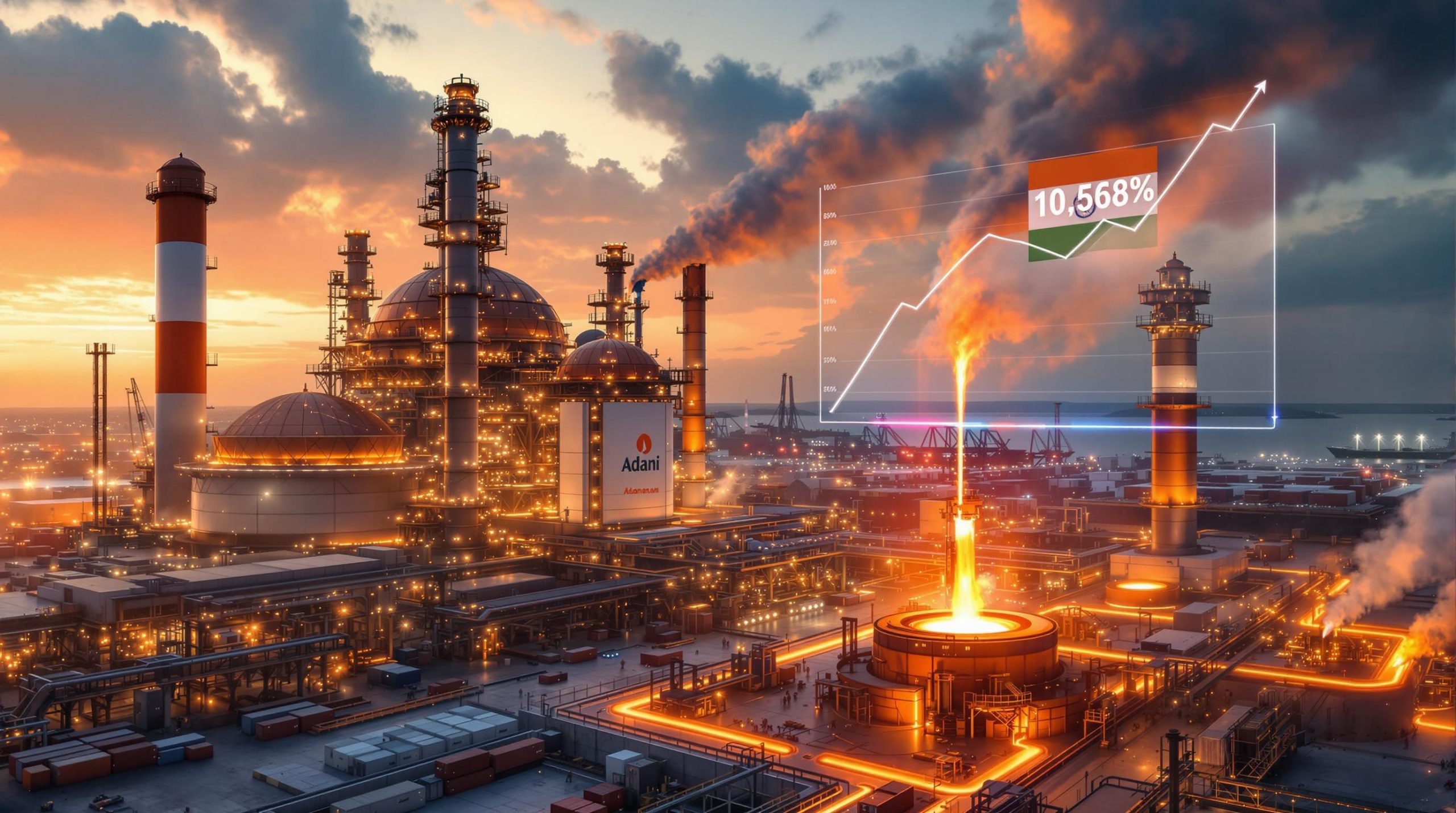What Is Happening in the Battle for LME Aluminum Stocks?
The aluminum market is experiencing a significant upheaval as London Metal Exchange (LME) stocks dwindle to critically low levels. Behind seemingly stable prices lies a complex battle for dwindling inventory that could signal deeper market transformations.
The Dramatic Decline in LME Aluminum Inventory
LME aluminum stocks have plummeted dramatically from over 1.3 million metric tons two years ago to approximately 321,800 tons of available metal today. This represents a nearly 50% reduction since early 2023, bringing inventory to levels not seen since 2022. The sharp decline has triggered market turbulence beneath a seemingly calm price surface.
What makes this situation particularly complex is the composition of the remaining inventory. Approximately two-thirds of remaining LME warehouse aluminum is Russian in origin, which presents significant complications for buyers in Western markets.
"The geopolitical dimension has transformed what would normally be a typical market squeeze into something more structurally significant."
Russian aluminum was banned in the United States and United Kingdom in April 2024, while the European Union has implemented quotas prior to a full ban scheduled for the end of 2026. Additionally, the LME specifically banned delivery of Russian metal produced after April 13, 2024. These restrictions have made Russian aluminum less desirable in Western markets while creating arbitrage opportunities elsewhere.
Why Are Traders Fighting Over Remaining Stocks?
Despite outward price stability, the technical indicators within the aluminum market reveal significant stress. The LME three-month price has remained relatively stable around $2,500 per ton, masking the intense competition for physical metal.
Market Dynamics Creating Tension
The real story is told through the market's time-spreads, which have become increasingly tight and volatile:
- The cash-to-three-months spread has shifted from a comfortable contango of over $42 per ton in April to a small backwardation
- The "tom-next" spread (cost of rolling positions overnight) reached a $12.30 per ton backwardation last week
- Only 150 tons of new metal entered LME warehouses this month despite spread incentives
- The 323,000 tons in LME off-warrant storage hasn't moved onto warrant to ease spread tightness
These technical indicators reveal significant pressure from large position holders attempting to secure physical metal in a tightening market.
Mega Long Positions and Market Squeezes
The aluminum market has a storied history of large traders taking substantial positions, often referred to as "mega trades." Currently, a significant long position holder appears to be attempting to acquire substantial aluminum volume.
Traditional squeeze tactics aim to tighten spreads to force holders to release metal. The unusual aspect of the current situation is that despite these financial incentives, minimal new metal has entered the LME system to capitalize on the pricing opportunity.
This reluctance to deliver metal into the LME system despite financial incentives suggests that physical aluminum may be genuinely scarce in the market, rather than simply tied up in financial positioning.
Is China Changing the Global Aluminum Balance?
A fundamental shift in global aluminum flows is occurring, with China emerging as a major factor particularly for Russian material that faces restrictions in Western markets.
China's Growing Import Appetite
Chinese imports of Russian primary aluminum have surged dramatically in recent years:
- 2021: 291,000 tons
- 2024: 1.13 million tons (a 288% increase)
- January-April 2025: 741,000 tons (48% year-on-year increase)
This acceleration represents a significant shift in global aluminum trade patterns. China, traditionally the world's largest aluminum producer, has become an increasingly important destination for Russian exports, reshaping global supply dynamics.
Structural Shifts in Chinese Production
China's domestic aluminum market is experiencing its own supply constraints, contributing to its increased import appetite:
- Chinese smelters are operating near the government's annual capacity cap of 45 million tons
- The national annualized run-rate has held steady around 44 million tons since early 2025
- Shanghai Futures Exchange (SHFE) aluminum stocks have fallen to a 16-month low of 110,000 tons
- The domestic forward curve is in backwardation, indicating tight supply
Demand remains robust, particularly from the rapidly expanding solar energy sector, which requires significant aluminum inputs for panel frames and mounting systems. This combination of capped domestic production and growing consumption is forcing China to import more aluminum than ever before.
How Are Secondary Markets Affecting Primary Aluminum?
Beyond the primary aluminum market, a secondary structural shift is developing in recyclable aluminum flows that further complicates the global supply picture.
The Global Scrap Battle
A multi-dimensional competition for aluminium scrap assessments is intensifying:
- China's stated policy aims to increase secondary production from recyclable sources
- However, scrap material is increasingly flowing to the United States, where it's exempt from 50% tariffs
- The European Union is considering export tariffs to prevent "scrap leakage" to both China and the United States
- These disruptions in scrap flows force processors outside the US to use more primary metal
This scrap redirection is creating a feedback loop that increases pressure on primary aluminum supplies, particularly in Europe and parts of Asia. As recycling streams are disrupted, the demand for primary aluminum increases proportionally.
The competition for scrap also highlights the growing importance of the circular economy in metal markets. As regions compete for recyclable material, policy decisions regarding tariff impacts on markets have outsized impacts on the broader aluminum market.
Is This a Market Signal or Just Trading Noise?
The current battle for LME aluminum stocks must be viewed in proper context to determine whether it represents a temporary trading anomaly or a genuine signal of changing market fundamentals.
Historical Context of LME Squeezes
The aluminum market is the largest global base metals market with annual consumption around 100 million tons. Throughout its history, LME aluminum has experienced numerous "mega trades" and stock battles.
Typically, these squeezes eventually draw metal into the system as prices respond. Financial incentives created by backwardations usually attract physical metal to exchange warehouses, relieving the pressure.
Why This Time Might Be Different
Several factors suggest the current situation may represent a genuine market signal rather than typical trading noise:
- Despite spread tightness, minimal new metal is entering the LME system
- China's strong demand for Russian material is redirecting global flows
- Production constraints in China limit its ability to increase output despite strong demand
- Robust demand, particularly from the solar energy sector, is maintaining pressure on supplies
- Scrap flow disruptions are increasing reliance on primary metal in many markets
The combination of these factors suggests the current LME stock battle may be symptomatic of deeper structural changes in the global aluminum market rather than simply short-term positioning by traders.
What Are the Implications for Aluminum Markets?
The ongoing battle for LME aluminum stocks carries significant implications for both short-term market dynamics and long-term structural trends.
Short-Term Market Expectations
The immediate outlook suggests continued tightness in the aluminum market:
- Spread volatility is likely to persist as traders compete for limited available stocks
- Price premiums for non-Russian aluminum may increase due to sanctions and restrictions
- The absence of significant metal arrivals into LME warehouses indicates genuine physical tightness
- Regional price disparities may widen as metal flows adjust to new trade patterns
Market participants should prepare for potential price spikes if the current tightness persists or worsens, particularly in regions where Russian material is restricted.
Long-Term Structural Changes
The current situation highlights several important structural shifts in the global aluminum market:
- China's role has evolved from primarily a producer to also being a significant importer
- Western sanctions on Russian material have permanently altered global trade flows
- The competition for recyclable aluminum is intensifying between major economies
- Production capacity constraints in China may create a ceiling on global supply growth
These structural changes suggest a potential rebalancing of global aluminum pricing power and trade patterns that could persist for years to come. Furthermore, the US–China trade war effects continue to influence metal markets in ways that may not be immediately apparent.
How Should Market Participants Respond?
Different stakeholders in the aluminum value chain face distinct challenges and opportunities in the current market environment.
Strategies for Different Market Players
For Traders and Investors
- Monitor spread dynamics as indicators of physical market tightness
- Track the flow of Russian aluminum as a key determinant of global availability
- Watch for policy changes regarding scrap exports from major economies
- Pay attention to capacity utilization rates in China as an indicator of supply constraints
- Consider the potential for increased price volatility in trading strategies
For Consumers and End Users
- Diversify supply sources to reduce dependency on any single origin
- Consider longer-term contracts to secure supply in a potentially tightening market
- Evaluate hedging strategies that account for spread volatility, not just outright price risk
- Explore potential substitution where technically feasible
- Monitor regulatory developments that could impact aluminum availability
For Producers
- Assess opportunities to restart idled capacity in regions with favorable energy costs
- Explore expansion of secondary production to capitalize on changing scrap flows
- Consider regional premiums when making sales allocation decisions
- Evaluate the potential for long-term contracts with consumers seeking supply security
- Monitor energy costs as a key determinant of production economics
Understanding the global tariff impacts will also be crucial for all market participants as they navigate these complex waters.
FAQ: Understanding the LME Aluminum Market Battle
What is causing the current tightness in LME aluminum stocks?
The current tightness appears to be driven by a combination of factors including sanctions on Russian material, China's increased import appetite, production constraints in China, and disruptions to global scrap flows. These factors are combining to create genuine physical tightness rather than simply financial positioning.
Why hasn't the squeeze attracted more metal into LME warehouses?
Unlike previous squeezes, this one may reflect genuine physical tightness rather than just positioning by traders. The restrictions on Russian material and strong demand from China may mean there simply isn't much available metal to enter the LME system. Additionally, the composition of remaining stocks (predominantly Russian) limits their appeal to certain buyers.
How are sanctions on Russian aluminum affecting global markets?
Sanctions have redirected Russian aluminum flows primarily to China, removing a significant source of supply from Western markets. This has created regional imbalances and complicated traditional trading patterns. The price impact has been masked by the overall global balance, but regional premiums for non-Russian material may increase.
What role is China playing in the global aluminum market?
China has evolved from being primarily a producer to also becoming a significant importer, particularly of Russian material. With domestic production capped and demand robust, China's import appetite is reshaping global aluminum flows. This represents a fundamental shift in China's position in the global aluminum trade.
How might the battle for LME stocks resolve?
If this represents genuine physical tightness rather than just positioning, prices may need to rise further to incentivize production increases or demand destruction. Alternatively, an economic slowdown could ease demand pressure and resolve the tightness. The resolution will depend on whether new supplies can be brought to market and how persistent the current demand drivers prove to be. In some regions, new bauxite project benefits may help alleviate supply constraints in the longer term.
Further Exploration:
Readers interested in learning more about aluminum market dynamics can also explore related educational content at MINING.com, which regularly covers developments in metal markets and global trade flows.
Want to Catch the Next Major Mineral Discovery?
Discovery Alert's proprietary Discovery IQ model delivers instant notifications of significant ASX mineral discoveries, turning complex data into actionable investment opportunities. Visit our dedicated discoveries page to see how historic discoveries have generated substantial returns and begin your 30-day free trial today.




